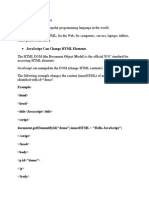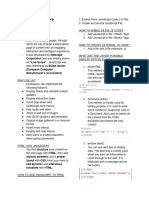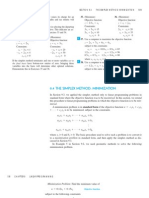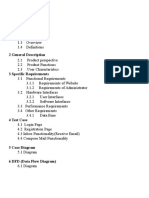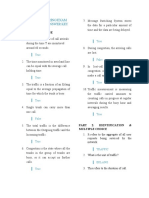0% found this document useful (0 votes)
21 views20 pagesJavascript
JavaScript is a lightweight, interpreted programming language designed for network-centric applications and is integrated with HTML. It allows for dynamic manipulation of web pages, client-side validation, and supports server applications through Node.js. Key concepts include the Document Object Model (DOM), variable declaration, data types, and functions, which are essential for web development.
Uploaded by
itstd.6375Copyright
© © All Rights Reserved
We take content rights seriously. If you suspect this is your content, claim it here.
Available Formats
Download as PDF, TXT or read online on Scribd
0% found this document useful (0 votes)
21 views20 pagesJavascript
JavaScript is a lightweight, interpreted programming language designed for network-centric applications and is integrated with HTML. It allows for dynamic manipulation of web pages, client-side validation, and supports server applications through Node.js. Key concepts include the Document Object Model (DOM), variable declaration, data types, and functions, which are essential for web development.
Uploaded by
itstd.6375Copyright
© © All Rights Reserved
We take content rights seriously. If you suspect this is your content, claim it here.
Available Formats
Download as PDF, TXT or read online on Scribd
/ 20
































